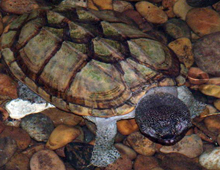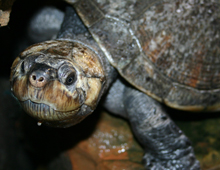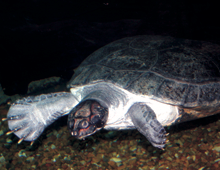
Until 1975, when selling turtles less than four inches long was banned due to outbreaks of salmonella in children, “babies” of this species were sold by the millions every year, for a few cents. Most died due to ignorance of their care. Those that lived, soon outgrew their green color and “cuteness”, reaching more than ten inches. Many were turned loose, with the result that these turtles from the Midwestern US are now found on both coasts, as well as such countries as France, South Africa, and Japan, where they threaten biodiversity.








